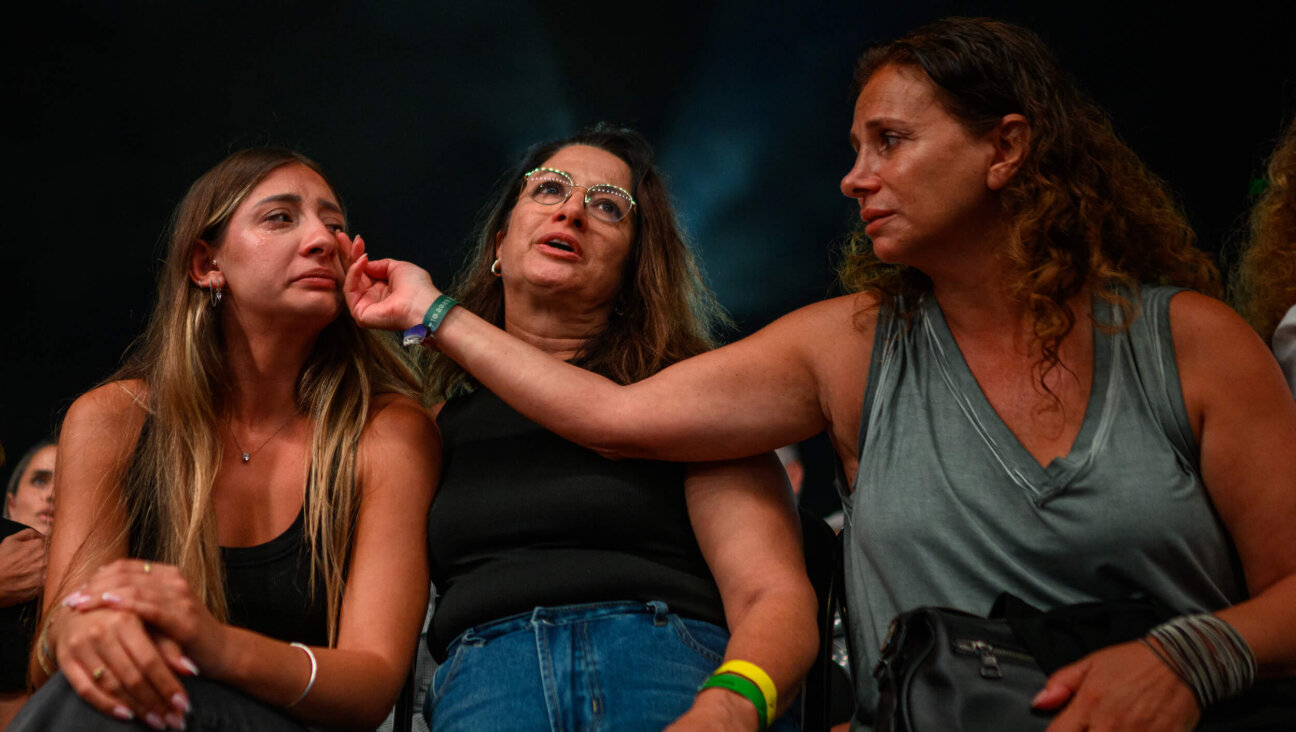Intermarriage Study Muddies Waters
A research project is offering a new view on how interfaith couples raise their children, with a few major surprises.
The new overview, published in the 2007 American Jewish Yearbook, compares the rates at which intermarried couples in different cities raise Jewish children. It comes on the heels of a study of the Jewish population in the greater Boston area that raised eyebrows with its finding that 60% of the children of intermarriages were being raised as Jews. But according to tabulations in the upcoming American Jewish Yearbook, Boston’s figure rests at the high end of an enormous national range among Jewish communities, one that goes from 75% in South Palm Beach to just 18% down the road in Martin and St. Lucie counties in Florida.
The figures bring a new layer of nuance to the debate over intermarriage. The presence of several major Jewish communities with more than 50% of interfaith couples raising their children as Jews undermines the long-held notion that intermarriage necessarily erodes Jewish identity and the Jewish population. But the seeming arbitrariness of which communities have high rates and which have low rates throws open the more complicated question of why some intermarried couples and their families remain engaged with Judaism while others do not.
The table was compiled by demographers Ira Sheskin and Arnold Dashefsky, and Sheskin warned that differing survey methods make it impossible to make precise comparisons between cities and also between individual cities and the national rate of 33% measured in the 2000 National Jewish Population Survey. Still, even within a broad range, the results seemed to defy logical explanation.
The cities with high rates of Jewish child-rearing among intermarried couples include rapidly growing Jewish populations, such as South Palm Beach (75%), and older and shrinking communities such as Cleveland (66%). Some older, well-established Jewish communities such as New York (30%) and Detroit (31%) rank below transient-heavy western cities such as Los Angeles (43%) and Las Vegas (42%), belying the common wisdom that Jews in the West are less affiliated.
The Boston study, which was released last year, attracted attention in part because the city’s federation had been funding a major outreach program to interfaith couples. In an op-ed in the Forward last year, two outreach advocates wrote that the Boston study, and in particular the 60% figure, “should end the debate over the effectiveness of outreach.”
But the new compilation, which was assembled in response to the Forward’s coverage of the Boston study, makes it clear that Boston’s figure is not exceptional and may not be the result of its programming. For example, Baltimore has no citywide interfaith outreach programs, yet 62% of intermarried couples there raise Jewish children. Meanwhile, San Francisco hovers at 38%, even though it has one of the country’s longest-standing outreach programs — though one former outreach director there noted that within the area served by the program, the Jewish childrearing rate was comparable with Boston’s 60%.
Most demographic studies, however, cannot capture the unique set of factors that go into individual decision-making. For example, Laurie Biundo, a mother of two in Walnut Creek, Calif., was raised by formerly Orthodox parents in a fairly unobservant household. She attended Jewish summer camp and joined a Jewish youth group, but, by her own account, Judaism wasn’t a large part of her life. When she and her non-Jewish husband married, neither considered religion a factor.
Biundo became reacquainted with her tradition when she took a part-time job working for a synagogue in the Boston area and enrolled her older son in an introductory class on Judaism. When she and her family moved to California, the classes stopped. But then her curiosity reawakened, and she decided to send her children to Hebrew school. She joined a synagogue, and both of her sons went on to be bar mitzvahed.
“I sort of got hooked into the idea of wanting my kids to know some of my history,” she told the Forward.
By most demographic indicators, Biundo and her sons were engaged Jews; however, the children have both since drifted away from Judaism, and Biundo herself did not renew her synagogue membership.
To Leonard Saxe, the primary author of the Boston study and a sociology professor at Brandeis University, it is backstories such as Biundo’s that have more of an effect on Jewish continuity than intermarriage itself.
“The bottom line is that the problem is not intermarriage,” he said. “Intermarriage is not what is leading to the dissolution of the American Jewish community. The negative presses are the lack of engagement and the lack of Jewish education that leads to a lack of engagement of folks.”
Steven M. Cohen, a sociologist who has studied intermarriage and its effects, suggests that the debate over intermarriage and childrearing is incomplete without a discussion about what kind of Jews those marriages produce. Even when raised Jewish, he says, those children don’t behave the same way as Jews born to in-married households do: They tend to receive less Jewish education, and in turn are more likely to intermarry themselves.
“For sure [the children] will not demonstrate the same levels of Jewish involvement,” he said.
Biundo said she hopes her sons will eventually come back to Judaism, even marry other Jews. But she admits she’s in no position to insist.
“I’m hoping that they might,” she said. “If not, then I will teach my grandchildren whatever little bit I know.”
A message from our Publisher & CEO Rachel Fishman Feddersen

I hope you appreciated this article. Before you go, I’d like to ask you to please support the Forward’s award-winning, nonprofit journalism so that we can be prepared for whatever news 2025 brings.
At a time when other newsrooms are closing or cutting back, the Forward has removed its paywall and invested additional resources to report on the ground from Israel and around the U.S. on the impact of the war, rising antisemitism and polarized discourse.
Readers like you make it all possible. Support our work by becoming a Forward Member and connect with our journalism and your community.
— Rachel Fishman Feddersen, Publisher and CEO





















